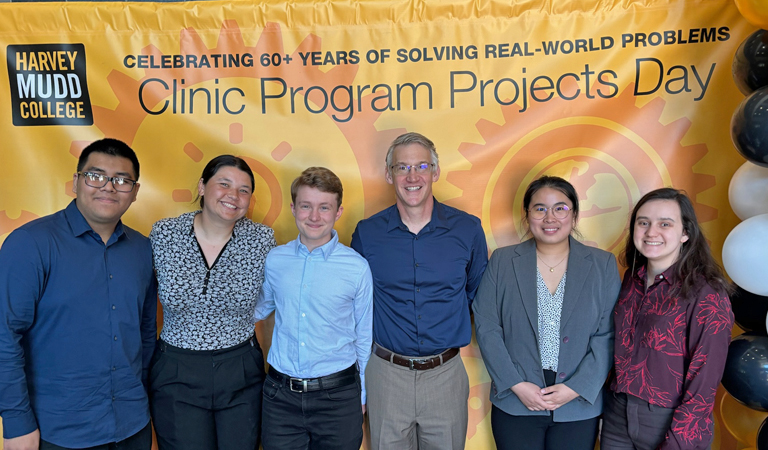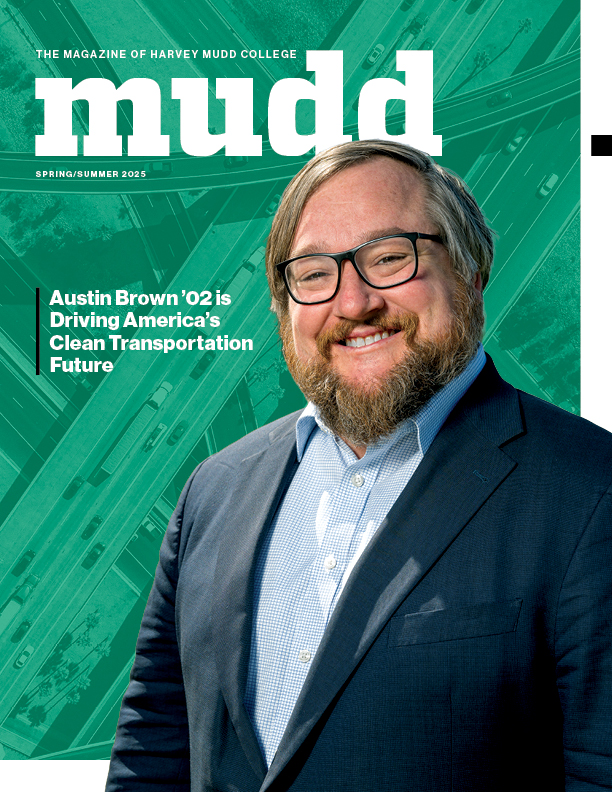Harvey Mudd Students’ Work on Energy Storage Published in Scientific Journal
October 8, 2024
Energy storage material research conducted by students participating in the Harvey Mudd College Clinic Program was published this month in the peer-reviewed scientific journal MRS Communications.
Albert Dato, professor of engineering and the team’s advisor, said, “The team has advanced the scientific community’s understanding of barium titanate (BaTiO3 or BTO), which is a fascinating energy storage material that could significantly impact the capacitors used in a wide range of applications, including the power grid, electric vehicles and capacitors in electronic devices.”
The Clinic team consisted of recent alumni Avery Pritchard ’24 (chemistry), Jessica Santosa ’24 (chemistry), and Heather Fuentes ’24 (engineering), as well as current students Vanessa Bartling ’25 (engineering), Josiah Garan ’25 (engineering), Madison Gonzalez ’25 (engineering) and Katrina Nelson ’25 (engineering).
Their 2023–2024 Clinic project “Permittivity of Ferroelectric Nanoparticles in a Silicone Composite” was proposed by sponsor organization Sandia National Laboratories. Team members investigated BTO, which is a ferroelectric material that has the potential to significantly advance energy storage devices. They created flexible capacitors consisting of BTO and silicone to explore how the properties of BTO change with particle size. In addition, the team performed density functional theory simulations to understand how molecules bind to the surface of a BTO particle.
The resulting paper focuses on structure-property relationships and surface interactions in nanocomposites of silicone and BTO.
Todd Monson, a principal member of the Sandia technical staff, and Renee Van Ginhoven, a scientist at Air Force Research Laboratory, served as liaisons for the project.
“I think that having our work published and presented widely was an amazing accomplishment,” said Gonzalez, who was part of the density functional theory modeling team. “It will allow other researchers in this area to find ways for these novel dielectric materials to be implemented. One hope I have for our research is that it can be developed and implemented to alleviate the energy crisis and bring about better energy practices to eliminate environment-harming energy generation.”
The students’ research was also presented at two scientific conferences earlier this year: American Physical Society 2024 March Meeting and the Materials Research Society 2024 Spring Meeting.
“The students’ work is a wonderful example of how Harvey Mudd College provides its students with unparalleled undergraduate research experiences that can significantly impact society,” Dato said.
